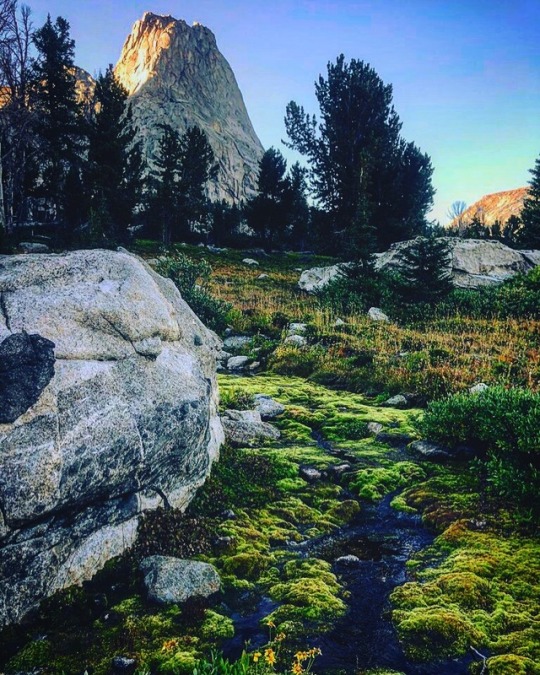#pingora
Explore tagged Tumblr posts
Text
#ばばさん通信ダイジェスト : Cloudflare の新しいロードバランサ Pingora を試してみる
賛否関わらず話題になった/なりそうなものを共有しています。
Cloudflare の新しいロードバランサ Pingora を試してみる
https://blog.cybozu.io/entry/2024/10/01/170000
0 notes
Text
A good day to trie-hard: saving compute 1% at a time
https://blog.cloudflare.com/pingora-saving-compute-1-percent-at-a-time/
0 notes
Text
Cloudflare Makes Pingora Rust Framework Open-Source
http://i.securitythinkingcap.com/T3PCvG
0 notes
Text
2024年10月06日の記事一覧
(全 12 件)
時間無制限、無料の文字起こしアプリを開発し��ので、アプリ紹介と学びまとめ。|にょす
クレジットカードを製造する技術
Webセキュリティのあるきかた
給与は上がり、持ち家率も高いのに…経済的に恵まれた「ベビーブーム世代」の幸福度が顕著に低い納得の理由 少子化には意外な利点がある
「ラジオ英会話」を半年、割と真剣に聴いたら何が起こるのか|ヒガシ
「ネット炎上が株式市場に与える影響」に関する研究論文によると、「炎上に対応した企業のほうがしなかった企業より株価が大きく下落した」という身も蓋もない結論だった
英語の速読をするやり方やコツとは?英語速読の練習方法やおすすめの参考書を紹介
「おじさん」「おばさん」の正しい老い方
Cloudflare の新しいロードバランサ Pingora を試してみる
【C#】コンパイルが必要な言語はダメらしいので「NativeAOT」について紹介
Session Hijacking 2.0 — The Latest Way That Attackers are Bypassing MFA
連番IDを使うと会社が潰れる。(訳: 連番とUUIDのベンチマークを取ってみた❤️)
0 notes
Photo
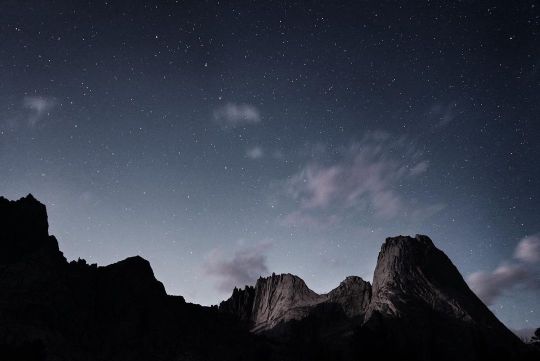
Snagged a cool shot with the moonlight reflecting off of the mountains. Most of what is lit up is what I got to wrestle over this last week. Pingora, and Wolfs Head Traverse in the Wind River Range. So good. . . . . #windriverrange #pingora #wolfshead #climbing #trad #tradisrad #alpineclimbing #wyoming #explorewyoming #wyominglife #windrivercountry #cirquofthetowers #cdt2021 #cdt (at Cirque of the Towers) https://www.instagram.com/p/CSwnPg8McQS/?utm_medium=tumblr
#windriverrange#pingora#wolfshead#climbing#trad#tradisrad#alpineclimbing#wyoming#explorewyoming#wyominglife#windrivercountry#cirquofthetowers#cdt2021#cdt
4 notes
·
View notes
Text



The Pingora by Wind River
Chatanooga, TN
81 notes
·
View notes
Text
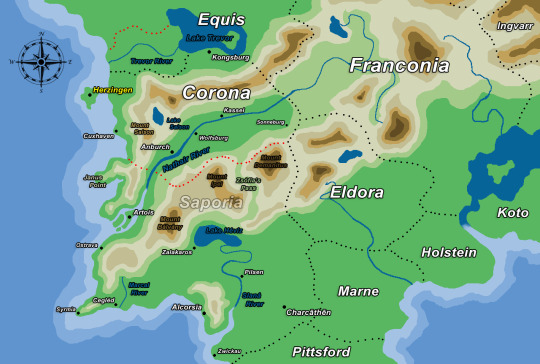
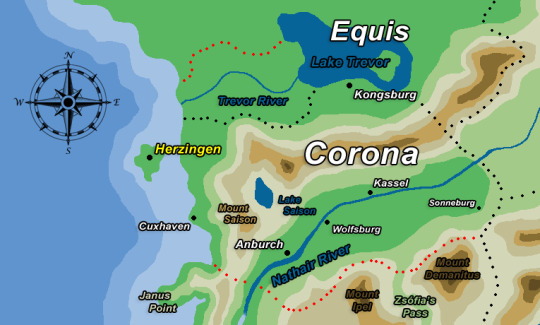
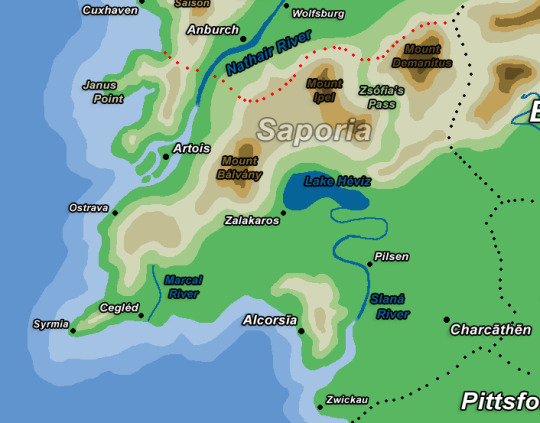
A remake of a previous map of Corona I made last year or so, inspired / taking influence from the Bitter Snow series by bestworstcase.
Worldbuilding notes:
Corona
A prosperous member of the Seven Kingdom alliance, whose otherwise pristine appearance is blemished with internal strife and a tumultuous past.
Points of Interest
Equis Border – Corona originally controlled most of Lorraine River and the southwestern coast of Lake Alsace (red line), but lost its territory to Equis in a rather embarrassing war that involved seals, manatees, and a colossal flying squid (black line). It’s a contentious point between the two kingdoms, as Kongsburg lost is outlet to the sea and the Lorraine valley was a major agricultural region. Not helping the matter is the current sovereign, King Trevor, renaming the lake and river after himself in an escalation with his petty, childish feud with King Frederic of Corona.
Kongsburg – The largest city in northern Corona. It’s a major port on the southern shore of Lake Trevor and economically speaking, been feeling the pinch of losing its outlet to the sea. There have been numerous scuffles between Coronan and Equisian ships over fishing rights. Rumors of the colossal flying squid harassing Coronan warships and snatching Coronan fisherman are unconfirmed but steadily growing.
Pingora Mountains – First of the two mountain ranges that split Corona into three parts. The tower Mother Gothel used to imprison Princess Rapunzel lies among the foothills, tucked way in a secret ravine. The region is heavily forested, filled with creatures and supernatural that can be very hostile to humans. Despite that several copper mines and logging sites maintain an active presence.
Herzingen – The capital of Corona and the fourth largest city in the kingdom, after Anburch, Alcorsīa, and Charcāthēn. The island formed the nucleus of Corona from which it has grown from annexing the adjacent coastal settlements and then expanding across the mainland. A defensive wall bisects the island and city into an affluent upper side clustered around the Der Sonne Palace, the seat of the monarchy, and the working class lower side that is connected to shore by the Shampanier Bridge. Beneath the city lies a honeycomb of secret tunnels built by King Herz der Sonne during the War of Unification with Saporia and they are of vital security to the Royal Guard of Herzingen.
Nathair River – The largest river in Corona, the kingdom’s primary breadbasket, and former source of conflict between regional powers. Originally hosting the city-state of Anburch and the Confederation of Wolfsburg-Kassel, both were annexed as Corona expanded over the Pingora Mountains. Now the river is divided between Corona controlling the lower valley and Franconia controlling the upstream and headwaters.
Saporia
A former kingdom that once prospered from its trading routes in the southern continent and abroad.
Points of Interest
Corona Border – The red line indicates where the border fluctuated across Nathair valley, with Corona pushing south to the mountains while Saporia pushed north to stop the encroachment. This ended up being one of the main causes of war between Corona and Saporia. The following union between the two kingdoms stopped the fluctuations and firmly placed the border flushed with Pittsford.
Janus Point – A rocky, steep promontory that stands between Artois and Cuxhaven. An ancient tree stands at its center, surrounded by a stone henge left crumbling from years of neglect. Zhan Tiri used to be worshiped here.
The Havasok – The second of the two mountain ranges that divide Corona into three parts, extending through Franconia and into Ingvarr. Steeper and larger peaks from those found in the Pingoras. The highest seven peaks are known as the Painted Ladies, known inspiring artists worldwide for their untouched beauty. They also formed a natural boundary between Corona and Saporia.
Mount Demanitus – The highest peak in Corona, hosting the ancient Demanitus Device inside. Originally named Zemplén by Saporians, it was renamed to honor Lord Demanitus for defending Corona against Zhan Tiri’s tyranny.
Zsófia’s Pass – A secret mountain passage between Mount Demanitus and Mount Impel that General Zsófia Shampanier used during the Nathair War to circumnavigate Coronan defenses along the river’s south bank, launching a counteroffensive that sliced the valley in half with the capture of Wolfsburg. Later, Shampanier and Herz der Sonne used it launch their conquest of Saporia with their combined armies. The passage was named in her memory.
Artois – Currently the fifth largest city in Corona, was the third after Alcorsīa, and Charcāthēn when Saporia was independent. Situated on the Nathair River Delta, it benefits from being the only major Saporian city not marred with strife and poverty, due its economy not disrupted by Coronan law. Saporians here mostly been assimilated into Coronan society and seen as ‘model citizens’ for others to follow.
Lake Hévíz – The largest freshwater lake in Corona and Saporia, draining into the sea via the Slaná River. Between the lake and the city of Pilsen lies a vast stretch of swampland called Mlaștina Doamnei, infamous for supposedly being Zhan Tiri’s original home in Coronan folklore. There have been several attempts to drain the swamps for practical land use but Saporians fiercely push back each time, citing the concern for ecological conservatism.
Alcorsīa – The second largest city in Saporia. It was once a wealthy city benefiting from being the terminus of several lucrative trade routes, notably the one that serviced Argentum and the other Hellenic states. Following the conquest of Saporia, the city experienced a gradual economic decline as Corona rerouted sea routes to Herzingen and Cuxhaven, the land routes through Charcāthēn, Pilsen, and Artois. It is now known for its destitute and neglected infrastructure, which feeds into growing tide of separatism in Saporia.
Charcāthēn – The largest, oldest city in Corona and the former capital of Saporia. Charcāthēn was sacked and burned in the climax of Corona’s conquest, its riches carted back to Herzingen as spoils of war and chunks of its surviving inhabitants fleeing to Marne and Pittsford, setting up diaspora communities in consequence. The city is a hotbed of Saporian separatism and has been the epicenter of several uprisings against Corona. Today it remains more or less under a military occupation by Coronan forces.
#Fandom chit chats#Kingdom of Corona#Kingdom of Saporia#Double Sun AU#I liked how this one turned out#I left the other states blank because#There would be too much to cover dfkbkfdbkv
8 notes
·
View notes
Photo

Pingora's Box. Wind River Range, Wyoming, USA. [3000x2002]. [OC]. My last morning on a multi-night backpacking trip to this beautiful spot ended with a surprise front moving in at sunrise bringing rain, rainbows, colorful skies, and big smiles.
3 notes
·
View notes
Photo

Pingora's Box. Wind River Range, Wyoming, USA. [3000x2002]. . My last morning on a multi-night backpacking trip to this beautiful spot ended with a surprise front moving in at sunrise bringing rain, rainbows, colorful skies, and big smiles.
2 notes
·
View notes
Note
Ok, based off of Moira saying ‘this is why I never went to church!’ Do Saporians have an organized place of worship for any deities? Are there masses or whatever held for Zhan Tiri? Is it a weekly or monthly thing, or are some ppl super devout and worship on the daily? Zhan Tiri does have a statue that gets offerings, was it common to do that pre-conquest, did they have small altars or shrines inside? Are there traditional prayers to Zhan Tiri by fishermen against storms? (All the questions!)
broadly speaking char malách has temples, cathay has barrows, and zhan tiri has henges or gardens. and then you get shrines everywhere - big ones in public squares or government buildings, and smaller ones in private houses and so on it’s very. everywhere. and then there’s places that aren’t like... places of worship specifically but are held as sacred grounds by their cults. so, uhhh
thorn syconium / zhan tiri
cashághē is the formal name of the socona henge, about five miles east of socona and right up against the edge of the peatland just south of the pingora mountains. it was always one of the larger henges and it’s one of the few that escaped being completely dismantled by coronans during the occupation, mostly because the nature of the terrain made it too hard to get to on horseback. so now it’s the seat of the syconium and kind of the place where henge holidays are formally celebrated.
the syconium doesn’t really do... like anything resembling mass or sermons, organized worship is very oriented around henge holidays, of which there are... eleven (sometimes twelve) minor ones per year and then five major festivals. the five major festivals are like if you’re pious, if you’re observant at all of the syconium’s tenets, you go to a henge to observe the festivals if you can, and if you can’t then you do the observance at your own shrine. and then the minor henge holidays occur every month on the fifteenth of the month, they’re called crēzáthanchīl / lady’s day, and you Can go to a henge for them if you want to but only deeply devout people do that. they’re pretty much just days of rest and, traditionally, feasting.
the five major festivals are:
azdīnach - the vernal equinox:
this one is kind of weird because, um, the sorchān calendar has a three year cycle of full year (ghaénīchē), small year (ghoshnīchē), and long year (nicheílean) and. in full years, the equinox happens on the 26th of araeháziray, which is the final month of the year and the last month of the ‘formal’ winter season. and then small years don’t... have a spring equinox, hence the name. and then long years have two spring equinoxes, one on the 9th of azlóhot, which is the first month of the year and the first month of the ‘formal’ spring season, and then one on the 19th of the intercalary month shaecaher, at the very end of the year during what’s called ‘little spring.’
so because of this weirdness azdīnach is a festival very concerned with beginnings and endings. the spring azdīnach is the ideal time to open a new chapter of your life; the winter azdīnachs are best for letting go of things that have been harming you. if you’re a farmer or gardener you start planting on azdīnach, if you have a child you name them during the festival or at least hold off on announcing their name to the community until the festival, and one of the biggest components of the festival is funerals! for everyone in the community who has died since the last one.
[there is no burial or equivalent component of saporian funerals, so it’s like - within the syconium, when someone dies the burial rites are done and the body is planted right away, and then you hold the memories until the next azdīnach and everyone in the community participates and mourns together.]
cresilínaeraegh - the summer solstice:
the saporian name for this one translates as ‘flower-maker’s day’ and out of the five it’s definitely the one that is the most. like fun. the festival itself is generally just kind of a big party, there’s a feast, there’s history songs, and prior to the conquest it was mostly notorious for being extremely loud and often very drunk gkjslkdjf. but theologically what cresilínaeraegh is about is commemorating the creation of ki itself, which was a joint… effort would be a strong word since it was kind of an accident LMAO but a joint project of zhan tiri’s and ri ni’n’s and huma’s and turul’s! and then this gets generalized into a celebration of life and growth in general.
azchīlál - the autumnal equinox:
so. this is kind of the shadow twin of corona’s festival of lights, in that the festival of lights is kind of ‘we are saying goodbye to the sun and bracing for the winter to come’ and has this big focus on symbolically remembering and honoring the sun in order to survive until spring. and azchīlál is more like ‘we are ritually killing the sun to perpetuate the endless cycle of rot and renewal’ KLASDJFK. azchīlál is the one where you get the ceremonial sacrifice of goats and other animals. harvests during the day and the sacrifices / feasts / revel after sundown.
tároshdhan - 15th of tárosh
this is one of the lady’s days but it’s the important one, and of the five major festivals it has the most significance and like, weight. traditionally it’s considered the day zhan tiri achieved or discovered choimghē (so, the day she ate ri ni’n), although i tend to think sorchā fudged the dates here a little bit. tároshdhan is very very very heavily associated with magic and the mingling of the profane and sublime. it’s kind of a witch’s holiday; magic is thought to be most potent on tároshdhan, there’s a lot of syconium rituals that are properly supposed to be performed or begun or ended on tároshdhan, stuff like that. (the crēdathámanē takes several years and is supposed to both begin and end on tároshdhan). the festival itself is accordingly pretty focused on magic and ritual.
crēlādīnacharogh - the winter solstice:
this one translates as ‘sun-eater’s night’ and in a similar vein as cresilínaeraegh it commemorates the slaying of jinarche and creation of the cosmos by [what would become] zhan tiri. in contrast to cresilínaeraegh though it’s a very solemn holiday! it’s kind of an accounting of wrongs and it’s kind of equally about atonement and retribution. crēlādīnacharogh is both a time for making amends or laying grudges to rest and for striking back against those who have harmed you, and there’s whole theological arguments to be had about identifying when the former is appropriate and when the latter is necessary. it has a reputation for being the bloodiest and most dangerous of the syconium’s holidays and prior to zhan tiri’s banishment i think that reputation was pretty earned because. if zhan tiri decided to smite you this is the day she’d do it. jksdfkj
it also has an element of paying reverence to huma, which is a really common characteristic for winter solstice holidays throughout the world because of the ‘humaic winter,’ which rosalia references in moonless air 13 and which - basically early in the shattered era one of huma’s cults pissed her off so she took the sun away. for six months. which caused famines and freezes and obviously it was night all over the world for six months while people frantically petitioned their gods for help. gkjsdjkf and then after that she was cajoled into bringing the sun back but this obv had an enormous cultural impact and now virutally every culture across the globe has some sort of holiday that boils down to ‘appreciate the sun or she might disappear again’ and also a big part of the reason why huma, despite being the third oldest god around and supremely powerful, has only a teeny tiny handful of small cults scattered around.
anyway! other important places for zhan tiri in saporia include:
janus point/cresezáhan - a much smaller ceremonial henge built around a yew tree zhan tiri inhabited from time to time, enough to imbue it with her power. unlike cashághē it’s not the sort of henge you’d go to for holiday festivals; it was used for specific rites and by witches who would visit it to collect magic.
stashalaghē - the pitch pond sirin visits in benighted chapter 2. like cresezáhan it’s a deep reservoir of zhan tiri’s magic, and specifically it’s located in the hollow zhan tiri tears in the peatland in this snippet. there’s no henge built around it because, for personal reasons, zhan tiri didn’t want one there, but it’s otherwise used the same way janus point is.
the charcāthēn gardens - these don’t actually exist anymore, but they were a sprawling, half-wild garden in charcāthēn’s religious quarter prior to the conquest. sorchā grew them, maintained them, and lived in them, and they were kind of a cross between open-air theater, community garden, school, and nest.
lady’s point/crēchíol - all that’s left of this is the defaced statue of the lady cassandra sees in benighted chapter 22; it used to be a much more elaborate and well-maintained shrine. this one was built by źatīr thēshala after they swore fealty to her and - kjsdfjk yes alcorsīan sailors would leave offerings there (of shells and bits of seaweed usually!) for good luck before they disembarked.
and then anyone who keeps a garden or a farm or anything where they’re growing plants or keeping animals will probably have a shrine to zhan tiri somewhere. prior to the conquest this was often like, literally a little statue you’d stick in the garden somewhere, but in modern times it’s a lot more common to have like, ‘stealth’ shrines where it’s like, a murex shell tucked away somewhere or a bundle of feathers tied to the side of a planter box or something like that that a coronan wouldn’t be able to identify as an icon of zhan tiri.
the splendorous temple / char malách
pre-conquest there were large, elaborate temples in each of saporia’s major cities - artois, alcorsīa, and charcāthēn - with the one in charcāthēn doubling as a seat of government where the thaómazhatēm convened. the one in artois was torn down during the occupation, the one in alcorsīa survived for a lot longer but was effectively barricaded by coronans and sat empty and neglected for centuries until it was also torn down about a hundred years ago, and the one in charcāthēn has been gutted and is partly in ruins but also still in use, albeit secretly.
services in the temples also don’t really. bear any resemblance to mass - there’s no preaching and i think of it as being more akin to like, a creative workshop? the temple in charcāthēn definitely skirts around the illegality of ternary worship by fronting as an arts school ajksdfjk and i think if a coronan stumbled into a service they… really wouldn’t see anything amiss unless they knew what to look for and where and knew enough saporian to recognize epithets of char malách. and then there’s also i think a really strong culture of like, small group philosophizing where you get together with some friends and a cháthar and just talk over tea.
i think of the splendorous temple as having tons of little holidays scattered throughout the year and really pious people might observe all of them but most just kind of pick and choose the ones they like! a lot of them involve lighting fires in some capacity jksdf. but. the Big One is cháraen, which always happens on the 5th of chámchar so the last month of formal summer. and cháraen’s festivities are basically.
- a water fast begins at noon on the preceding day (the 4th). adults who are observing the fast will generally spend the night cooking, because
- you get up at dawn on the 5th and break fast either in the temple itself or in your own community; both options are a potluck style feast where you’re expected to bring your own homemade dishes
- then for the rest of the day and evening it’s - almost like a fair with music / dancing / street performances but also the idea is you spend the day Making Things, so on cháraen you see a lot of people in the streets with easels and in heavily pious neighborhoods a lot of craftspeople and artisans will open their workshops and give lessons to the public - as a consequence of this a lot of apprenticeships get started during cháraen because it gives professionals an opportunity to spot young people who have the knack for their craft or just seem really passionate about it.
- at midnight there are huge community bonfires or even like pyres and you ceremonially burn the things you spent the day making.
it’s. meant to be a celebration of the beauty of both creation and destruction, and like a time of reflection on mortality and the finite nature of existence and finding appreciation in what one hands whilst accepting that loss is inevitable but survivable.
char malách doesn’t have as many sacred places as zhan tiri does because he’s a lot less liable to get attached to specific places but one really significant location for him is laran house & the golden spring. which has actually indirectly shown up in the story, here:
“—And this is ‘Daybreak on the Golden Spring.” Nigel clears his throat as he glides to a halt before the next painting, and Rapunzel gives it a dutiful glance. A tumble of pale stone, dewy ferns; honeycombed with small azure pools. Steam rises off the water in misty suggestions of gold, giving the whole landscape a gauzy, sun-struck look. “Marvelous piece. From Pamona Percy’s garden series; she completed this one in fifteen… forty-six, if memory serves. See how the water shimmers? She mixed powdered nacre with her paints to achieve an iridescent effect.”
it’s a system of hot springs nestled in the pingora mountains - i think of it as being actually quite close to rapunzel’s tower because the idea of calanthe visiting on the regular really tickles me - and laran house is… kind of a cross between an inn and a museum? built just beneath it. it is super off the beaten path, to the point that i don’t think corona is actually aware of its existence. but the springs are sacred to char malách and touched by his magic - the legend is that the springs bloomed in the wake of massive volcanic eruption that was a manifestation of char malách - so laran house is run by the temple and gets a steady trickle of saporian guests.
the barrow makers / cathay
there is a vast system of interconnected barrows under the hills of śaedhíhran, a town close to charcāthēn that is essentially a fully-fledged city populated entirely by cultists, barrow-wights, and an assortment of criminals and dissidents who aren’t too squeamish to hide out from the law there.
most religious saporians pay reverence to cathay on her holidays and [if they’re not following syconium burial rites and funeral customs instead] during funerals, and otherwise let her be. her cult is largely composed of bone-witches like sitheach, and then undertakers, grave-diggers, barrow-makers and so on, people for whom death is a profession. and then she does get some really extreme little murder cults that pop up now and again but, while mass murders and wars do draw her attention, cathay doesn’t really… care? about individual deaths so murder is not like, encouraged. and the ternary cult is under constant pressure from the syconium and the splendorous temple to not be killing people willy-nilly so it tends to dispatch the murderdeath cults when they pop up gjkdksf anyways
the point being. barrow burials, funerals, and parts of salanmora are open to adherents of the other two cults of the ternary, as are the rites involved when you’re hiring on undead workers (i have mentioned this before i think but a LOT of saporia was built with undead labor, and most pre-conquest saporian buildings will have a little shrine to cathay built into them somewhere as payment for services rendered), and bone-witches are allowed to do temporary reanimation in front of other people, but everything else is closed.
a key component of the faith is repudiation - bone-witches give up their given and sometimes family names and take on new monikers, they might sacrifice certain memories or feelings, it is… not uncommon for the really highly-ranked ones to have undergone amputations and replaced whole limbs with bone constructs and stuff like that! it’s considered to be one of the strictest and most difficult magical paths not just in saporia but anywhere. and it’s all very secret and even within the cult one’s personal repudiations are considered to be extremely, extremely private information. it’s between you and cathay and nobody else has a right to ask.
when the cult gathers it’s almost always for wight-raising, which is an Event! traditionally it happens during the closed portions of salanmora or on the 5th of shóldan (in spring), dathamánē (in summer), sicáraen (in autumn), or shalámaer (in winter).
and the difference between temporary reanimation and wight-raising is a temp wight is only viable for a few hours at most - cathay’s magic is propagated through the blood of the caster, so basically with temp wights as soon as the cuts scab over the magic washes out of the corpse. whereas a permanent wight is prepared and usually done by large groups of bone-witches; there’s a variety of different rituals for different kinds of wights - the rite sitheach used with lance in moonless air chapter 8 was pretty much an abridged version of a rite that would, with an actual corpse and a few more bone-witches to help, result in a flesh-wight that wouldn’t rot until the magic unraveled a year or so later. these are the popular choice for undead labor because they’re physically quite a bit stronger than bone-wights and also a lot less intensive to create, vs bone-wights which can last for centuries but are comparatively weak and take a huge amount of effort to raise.
wight-raising aside a lot of the religous practices in the barrows involve meditation, both individually and in groups, often in magically-induced altered states of consciousness like what happens during the public portion of salanmora. it’s a very. contemplative faith that is very concerned with separation from the individual consciousness and seeing and appreciating and being integrated with the pattern of the collective.
i think the first rite anyone goes through when they become acolytes of cathay is spending the night alone in a crypt or a catacomb with nothing but the dead for company - it’s about facing the reality of death and then relinquishing your fear of it and if you can’t do that then you’re not allowed to fully enter the cult.
25 notes
·
View notes
Text
New Post has been published on Mortgage
Bayview Asset Management acquiring Pingora Holdings fro... - http://bit.ly/2lzNk72 - #Acquiring, #Asset, #Bayview, #BreakingNews, #Fro, #Holdings, #Management, #Mortgage, #Pingora
0 notes
Text
Cloudflare Makes Pingora Rust Framework Open-Source
https://www.phoronix.com/news/Cloudflare-Pingora-Open-Source
0 notes
Text
0 notes
Text
Cloudflare、NGINXに代えて自社開発のRust製HTTPプロキシ「Pingora」をグローバルCDNに採用。性能向上しつつCPUとメモリ消費を3分の1に
CDNプロバイダのCloudflareは、同社のグローバルなCDNの基盤として長らく利用してきたNGINXに代えて、同社自身がRust製のHTTPプロキシである「Pingora」を開発し利用していることを明らかにしました。 Pingoraは... https://www.publickey1.jp/blog/22/cloudflarenginxrusthttppingoracdncpu31.html?utm_source=dlvr.it&utm_medium=tumblr Publickey
0 notes
Text
0 notes
